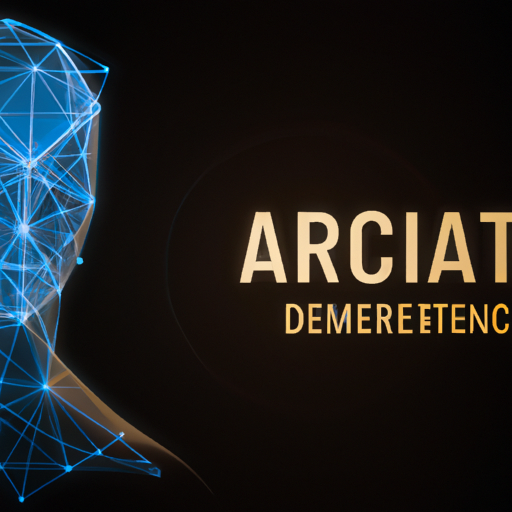Artificial Intelligence For Beginners: An Exciting Journey Into The Future
Artificial intelligence for beginners can seem like a daunting subject, but the reality is that it’s an exciting journey into the future of technology.
With AI becoming a part of our daily lives, understanding its basics is more important than ever.
Whether you’re intrigued by the idea of self-driving cars, fascinated by smart home devices, or curious about the algorithms behind social media platforms, AI has something to offer everyone.
What Is Artificial Intelligence?
Let’s start with the basics.
Artificial intelligence (AI) refers to machines designed to mimic human intelligence.
They can learn from data, make decisions, and even improve their performance over time.
Think of AI as giving your computer the ability to think and act like a human being.
It’s like having a super-smart assistant who knows exactly what you need and helps you achieve it efficiently.
The Different Types Of AI
There are mainly two types of AI: narrow AI and general AI.
Narrow AI is designed for specific tasks like facial recognition or language translation.
Though highly advanced in their respective fields, these systems cannot perform tasks beyond their programming.
General AI aims to replicate human cognitive abilities across various tasks.
Imagine a machine that can write an essay one minute and play chess the next!
While we’re not quite there yet with general AI, narrow AI systems are already making significant impacts in various industries.
The Basics Of Machine Learning
When it comes to artificial intelligence for beginners, understanding machine learning (ML) is crucial.
ML is a subset of AI focusing on developing algorithms that allow computers to learn from data.
Instead of being explicitly programmed for every task, these systems learn patterns from large datasets to make decisions or predictions.
Ever wondered how Netflix recommends shows you might enjoy?
That’s machine learning at work!
How Machine Learning Works
Machine learning can be categorized into three main types: supervised learning, unsupervised learning, and reinforcement learning.
Supervised Learning: Here, ML models are trained on labeled datasets where both input and output variables are given. It’s like teaching a child by showing them examples repeatedly until they get it right.
Unsupervised Learning: In this type, models find hidden patterns in data without any labeled responses. Think of it as letting a child explore and discover things independently.
Reinforcement Learning: This approach involves training models through rewards and penalties. It’s akin to training your dog with treats when they follow commands correctly!
Getting Started With AI Programming Using Python
For beginners interested in diving deeper into artificial intelligence programming with Python offers an accessible entry point.
Python’s simplicity and flexibility make it an ideal choice for those new to coding as well as seasoned developers looking to implement machine learning models quickly.
From libraries like TensorFlow and Scikit-learn that simplify complex computations to online communities providing valuable resources Python makes starting with AI less intimidating than it looks.
Resources For Learning Python And AI
If you’re ready to take the plunge into AI programming with Python, there are numerous resources available:
– Online platforms offer courses ranging from basic Python tutorials to advanced machine learning projects.
– Universities provide access to comprehensive materials through cloud computing courses focusing on artificial intelligence.
– Books such as “Artificial Intelligence: A Modern Approach” provide detailed guides suitable for both novices and experts in the field.
The Importance Of STEM Education In Understanding AI
To grasp artificial intelligence fully one must appreciate its foundation in science technology engineering mathematics (STEM) disciplines.
STEM education equips individuals with critical thinking skills necessary for tackling complex problems inherent in developing sophisticated algorithms driving modern-day applications.
From high school students exploring basic concepts through introductory lessons all way up college graduates pursuing specialized degrees understanding STEM subjects vital anyone interested becoming proficient within this ever-evolving domain.
Encouraging STEM Involvement Among Young Learners
Promoting interest among young learners essential nurturing next generation innovators capable pushing boundaries further:
– Schools should integrate interactive materials demonstrating real-world impact technologies early curriculums.
– After-school programs offering hands-on experiences encourage students apply theoretical knowledge practical scenarios.
– Mentorship opportunities connecting experienced professionals enthusiastic newcomers foster collaborative environments conducive growth development.
By fostering passion within younger demographics society ensures continued advancement fields ultimately benefiting broader humanity collectively leveraging potential innovations driven forward motivated individuals eager embrace challenges presented forth coming decades ahead us all!
A Bright Future With Artificial Intelligence
Embarking journey uncovering mysteries surrounding artificial intelligence beginners leads discovering myriad possibilities awaiting exploration horizon beckons curious minds venture forth uncharted territories define future shaping world around us today tomorrow beyond!
Whether aspiring become full stack developer aiming revolutionize industries transforming traditional approaches cutting-edge solutions passionate individual simply seeking expand horizons gaining valuable insights rapidly evolving landscape modern technology embracing potentials offered advancements ensures fulfilling rewarding experiences await those brave enough embark upon adventures uncovering vast realms opportunities lying undiscovered ahead!

